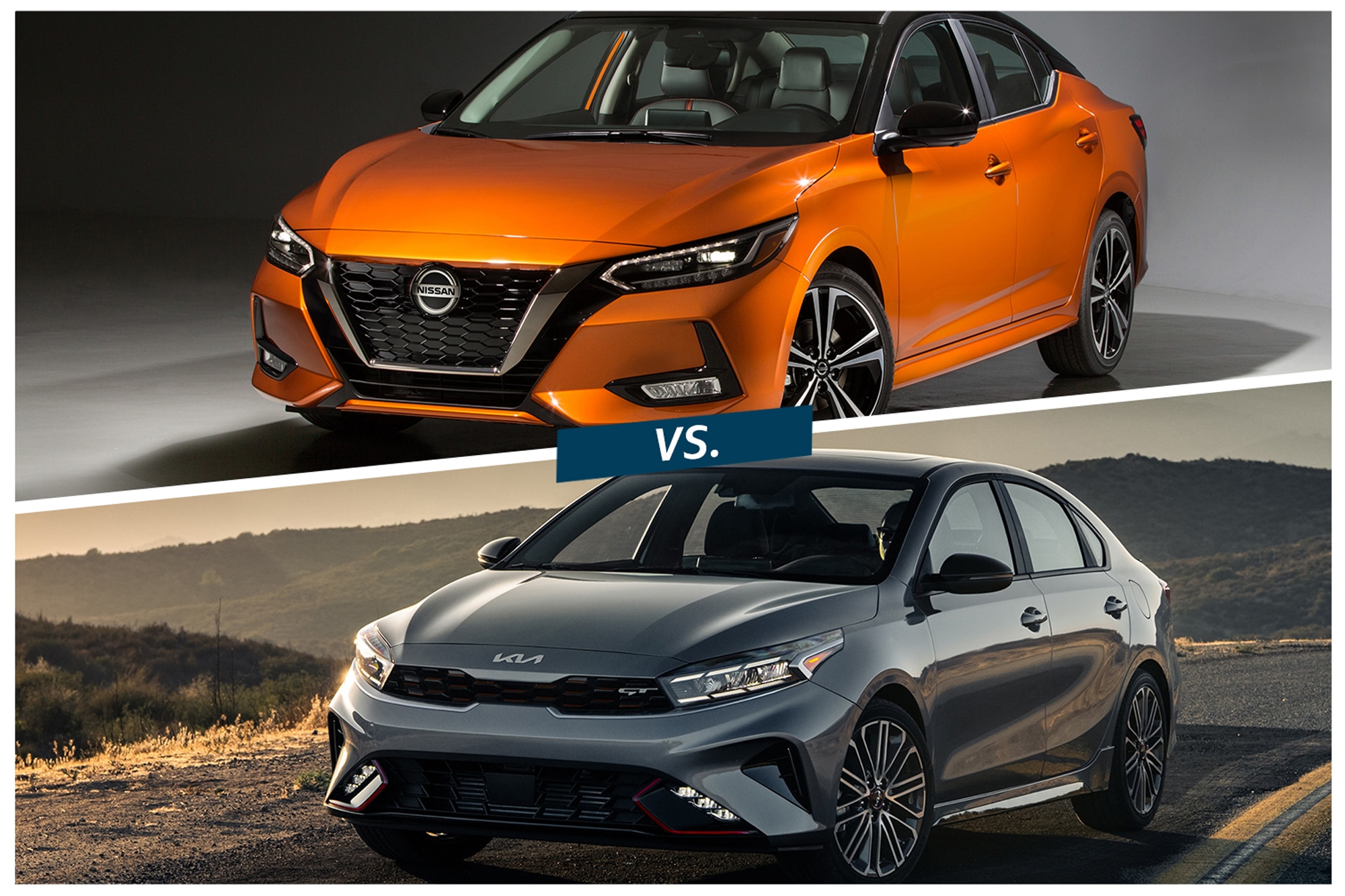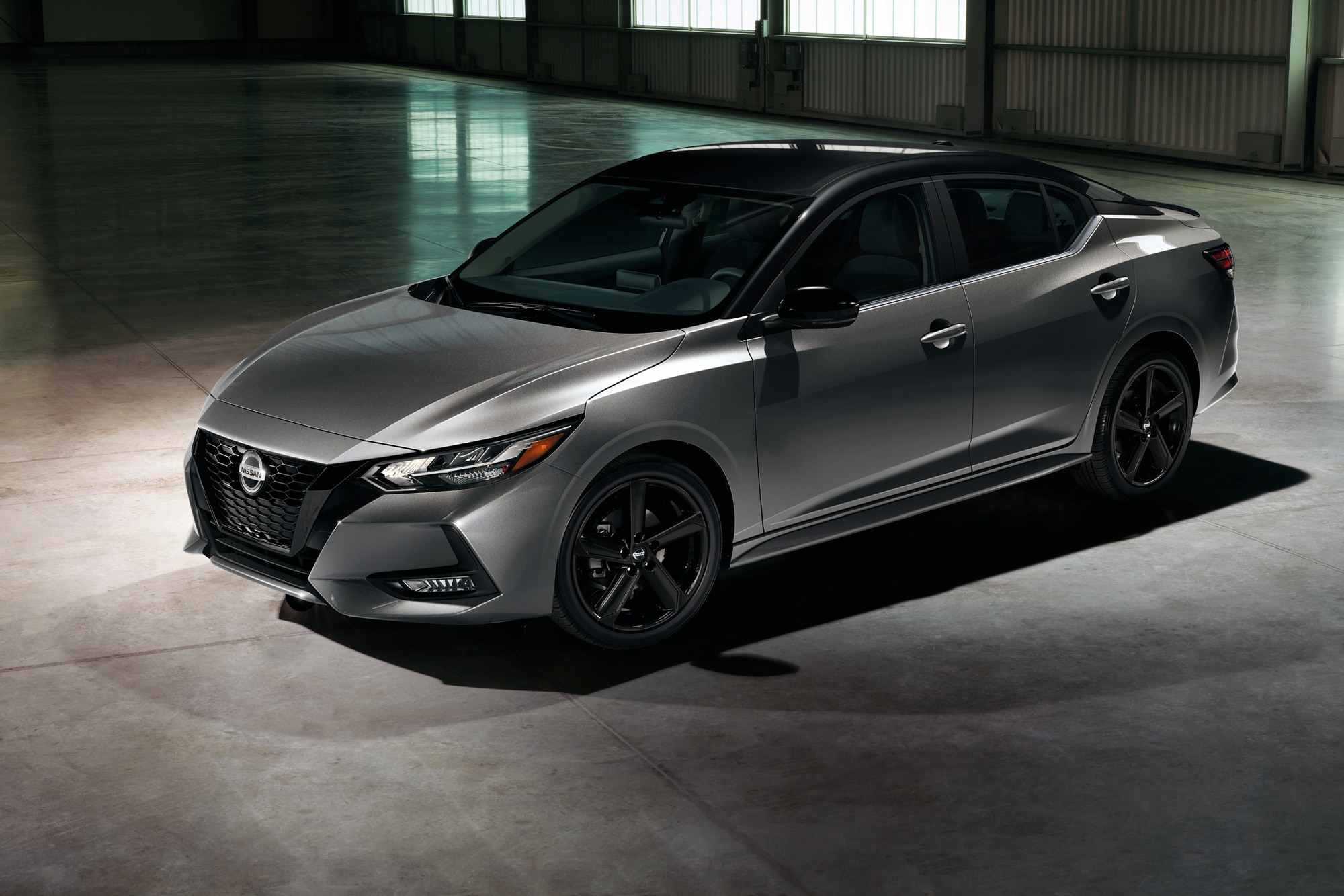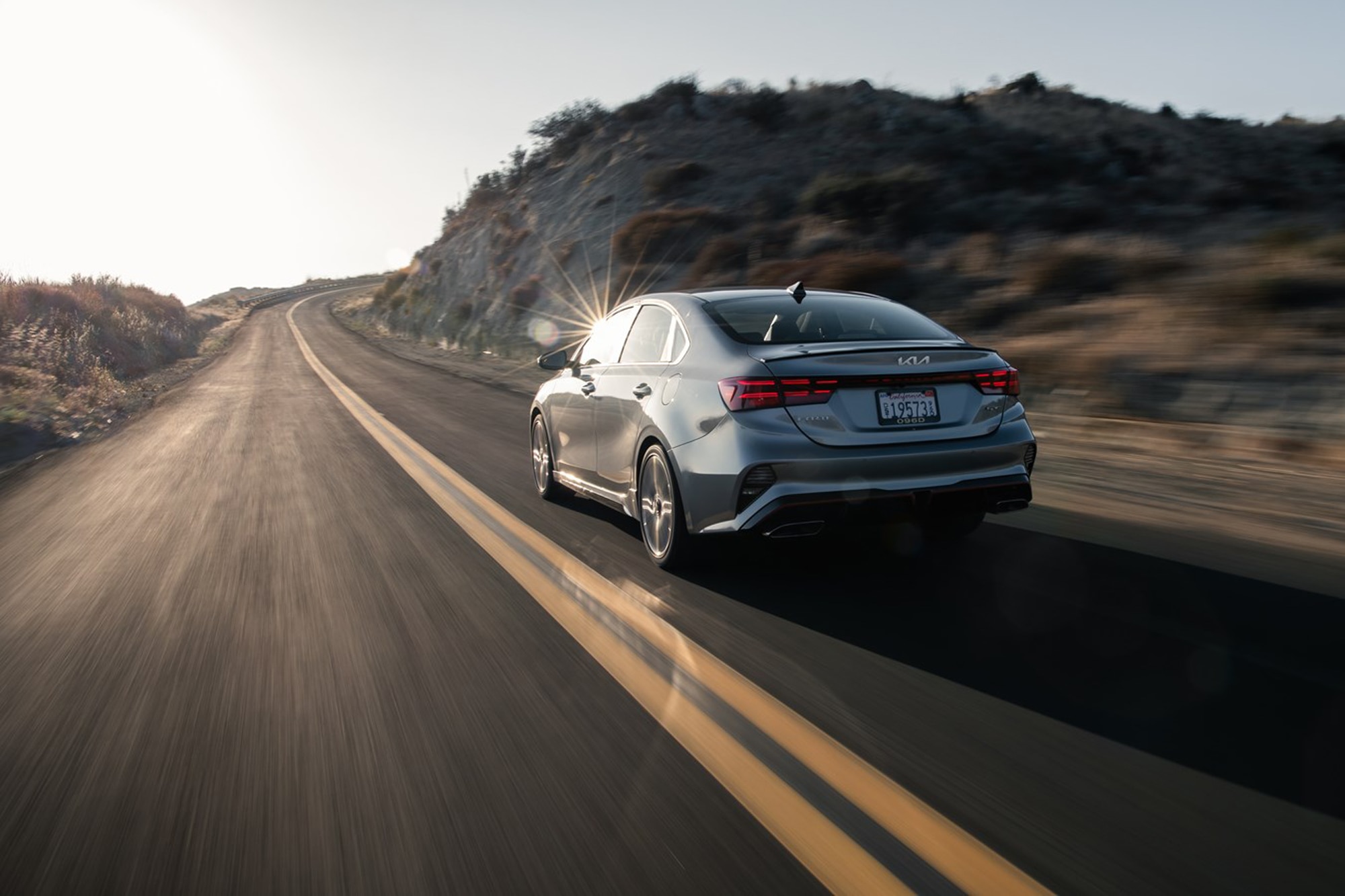2022 Kia Forte vs. 2022 Nissan Sentra: Price, Features, and Fuel Economy Compared
These two efficient compact sedans offer much of the same kit, but one leans a little sportier.
 Nissan/Kia
Nissan/Kia
QuickTakes:
While both the Kia Forte and Nissan Sentra start at a shade over $20,000, the Kia has a wider range of models and trim levels. Every version of the Sentra shares the same engine and transmission, which the entry Forte more or less matches, but Kia also offers a high-performance GT model with a sport-tuned suspension and an optional manual transmission.
 Nissan
Nissan
Price
The Sentra comes in three different trim levels, with the lowest-priced S rolling in at $20,635. Every model features the same four-cylinder engine, which generates a modest 149 horsepower and leaves the Nissan feeling a bit winded compared with other models in its segment. An unexciting continuously variable transmission drives the front wheels.
The Kia, which features mild visual tweaks for 2022, starts at $20,115 and offers a couple of powertrains: The Forte FE, LXS, and GT-Line rely on a 147-hp four-cylinder, a CVT, and front-wheel drive—quite similar to the Nissan. But the Forte GT is a different animal. Its turbocharged engine cranks out 201 horsepower and comes paired with a seven-speed dual-clutch automatic, a setup normally reserved for more expensive cars than a $24,515 sedan. For $1,000 more, enthusiasts can equip the GT with a six-speed manual transmission.
 Nissan
Nissan
Features
While the Sentra is not the sportiest compact sedan on the market, the styling is fairly fresh, and it looks more expensive than it is. The base model comes with blind spot monitoring, which is typically an extra-cost feature at this price point. This is in addition to the lineup’s standard lane-departure warning and forward and rear collision mitigation with pedestrian detection. Adding the $590 All-Weather package on the mid-level SV gives you some nice luxury features, such as remote keyless start, a heated steering wheel, heated front seats, and dual-zone climate control. (You can get the last two amenities on higher trims of the Kia, as well as ventilated seats, which the Nissan doesn’t offer.) A surprisingly cushy ride makes the Sentra seem a class above. On the other hand, car shoppers may bristle at the fact that they have to pay extra for floor and trunk mats.
 Kia
Kia
As for the Forte, you get some advanced safety systems, including forward collision mitigation, driver-attention monitoring, and lane-keeping assist, but blind-spot monitoring is available only on the LXS or better. Kia also offers rear cross-traffic monitoring, but rear automatic emergency braking is oddly off the table. The Forte has 15 cubic feet of cargo volume, one cube more than the Sentra. But if you want the 60/40-split folding rear seat—standard in the Nissan—you need to move up to the LXS. On the positive side, the interior is well appointed and smartly designed. It doesn’t feel like a bargain-basement econobox.
 Kia
Kia
Fuel Economy
Both vehicles shine in the fuel-economy category. According to EPA test procedures, the Sentra returns up to 29 mpg in the city and 39 mpg on the highway. The non-turbo Forte does a little better than that, scoring up to 31 mpg city and 41 mpg highway, but the GT model, with its more powerful engine, fares worse, delivering 27 mpg city and 35 mpg highway with the dual-clutch and 22 and 31, respectively, with the manual.
Written by humans.
Edited by humans.
 Mark Hacking
Mark HackingMark Hacking is an award-winning writer with more than 20 years experience covering the automotive scene for some of the world's most popular publications. Mark holds an FIA International Race license and has his sights set on competing in the Rolex 24 at Daytona in the future. He was the first automotive journalist to race in the Ferrari Challenge series (in 2013) and the Jaguar I-PACE eTrophy series (in 2019).
Related articles
View more related articles